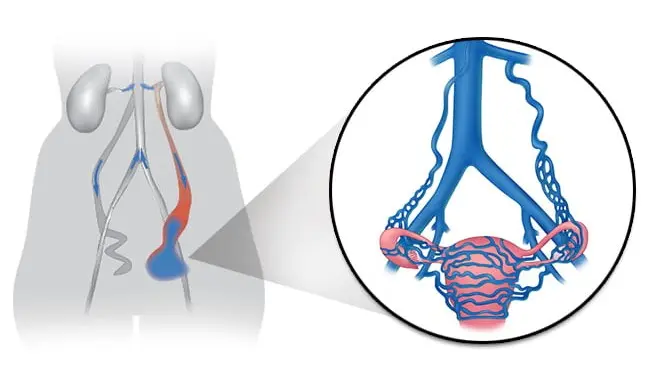Pelvic Congestion Syndrome (PCS)
Understanding Causes, Symptoms, and Treatment Options

What is Pelvic Congestion Syndrome (PCS)?
Pelvic Congestion Syndrome (PCS) is a condition caused by varicose veins in the pelvic area. It typically affects women of childbearing age and results in chronic pelvic pain. The pain is often worse after prolonged standing or sitting and can significantly impact quality of life. PCS is associated with abnormal vein function, leading to blood pooling and increased pressure in the veins.
Key Features of PCS
- Chronic pelvic pain lasting more than six months
- Pain that worsens after standing, sitting, or during menstrual periods
- Associated with varicose veins in the thighs, buttocks, or vaginal area
- Symptoms often improve when lying down
Symptoms of Pelvic Congestion Syndrome
The most common symptom of PCS is chronic pelvic pain. Other symptoms may include:
- Dull, aching pain in the lower abdomen or pelvis
- Heaviness or fullness in the pelvic region
- Worsening pain after sexual intercourse
- Visible varicose veins in the pelvic area, thighs, or buttocks
- Pain during or after menstruation
- Lower back pain or leg swelling
Causes and Risk Factors
PCS occurs due to poor vein function, leading to blood pooling in the pelvic veins. Risk factors include:
- Pregnancy: Increased blood volume and hormonal changes weaken vein walls
- Multiple Pregnancies: Repeated pregnancies strain pelvic veins
- Hormonal Changes: High estrogen levels can affect vein elasticity
- Family History: Genetic predisposition to varicose veins
How is PCS Diagnosed and Treated?
Diagnosis involves a combination of medical history, physical examination, and imaging studies:
- Ultrasound: Identifies abnormal blood flow and vein enlargement
- CT or MRI: Provides detailed images of pelvic veins
- Venography: Contrast dye and X-rays to visualize vein abnormalities
Treatment options include:
- Medications: Pain relievers and hormonal treatments to manage symptoms
- Pelvic Vein Embolization: A minimally invasive procedure to block abnormal veins
- Lifestyle Changes: Regular exercise, weight management, and avoiding prolonged standing
- Surgical Intervention: Rarely needed, used for severe cases unresponsive to other treatments
Risks and Potential Complications
Without treatment, PCS can lead to:
- Persistent pelvic pain affecting daily activities
- Worsening varicose veins in the pelvic region
- Complications during future pregnancies
- Emotional distress due to chronic pain
Recovery and Long-Term Management
Steps to manage PCS and reduce recurrence include:
- Following a balanced lifestyle with regular physical activity
- Using prescribed medications or treatments consistently
- Attending regular follow-ups with healthcare providers
- Seeking early intervention for recurrent or worsening symptoms
With timely diagnosis and appropriate treatment, most individuals experience significant symptom relief and improved quality of life.